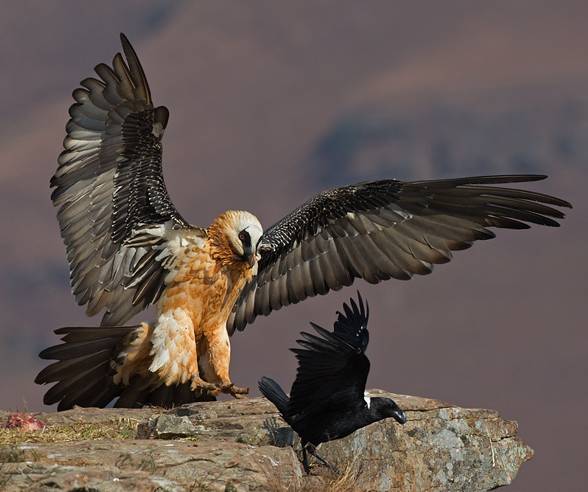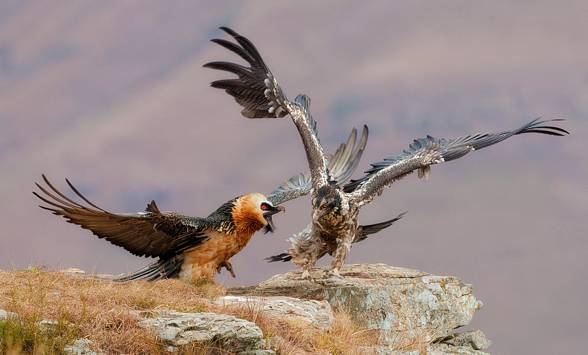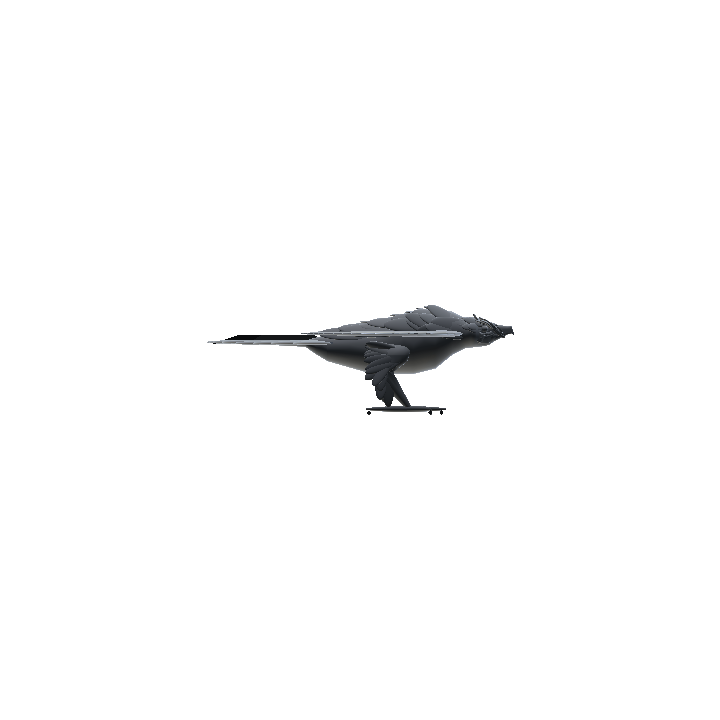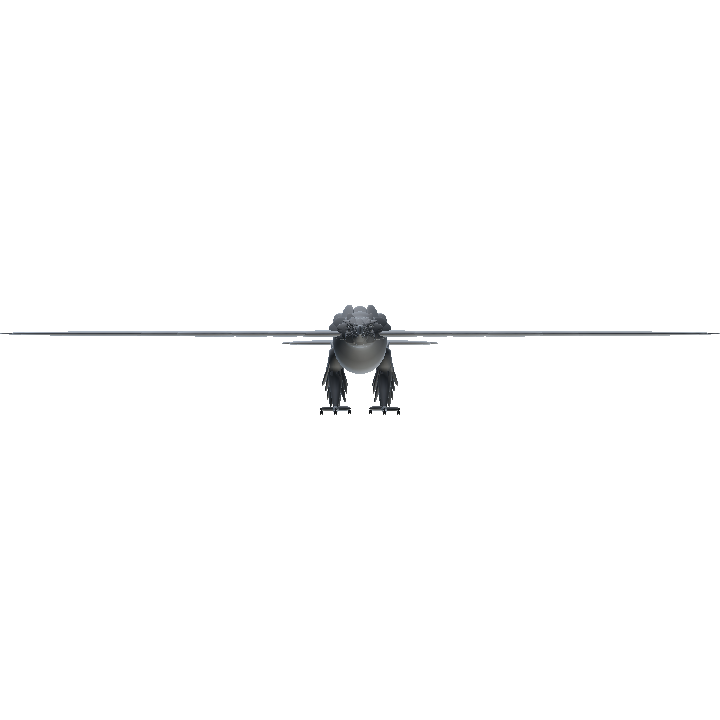You can use two ways to fly - trottle (turn on the engine) or flapping your wings(VTOL)You can change the angle of the wings by using trim up or downTo take off, use the trottle and pitch then you can turn off the trottle and use wings
AG1 and VTOL control - automatic wing flapping and tail
Ag 2 to activate wings trim.
Ag 8 to activate gyroscope (use during takeoff).
Paws = landing gears.
You can open the beak using the brakes.
The bearded vulture (Gypaetus barbatus), also known as the lammergeier and ossifrage, is a bird of prey and the only member of the genus Gypaetus. This bird is also identified as Huma bird or Homa bird in Iran and north west Asia. Traditionally considered an Old World vulture, it actually forms a minor lineage of Accipitridae together with the Egyptian vulture (Neophron percnopterus), its closest living relative. It is not much more closely related to the Old World vultures proper than to, for example, hawks, and differs from the former by its feathered neck. Although dissimilar, the Egyptian and bearded vulture each have a lozenge-shaped tail—unusual among birds of prey.
This bird is 94–125 cm (37–49 in) long with a wingspan of 2.31–2.83 m (7.6–9.3 ft).[8] It weighs 4.5–7.8 kg (9.9–17.2 lb), with the nominate race averaging 6.21 kg (13.7 lb) and G. b. meridionalis of Africa averaging 5.7 kg (13 lb).[8] In Eurasia, vultures found around the Himalayas tend to be slightly larger than those from other mountain ranges. Females are slightly larger than males. It is essentially unmistakable with other vultures or indeed other birds in flight due to its long, narrow wings, with the wing chord measuring 71.5–91 cm (28.1–35.8 in), and long, wedge-shaped tail, which measures 42.7–52 cm (16.8–20.5 in) in length. The tail is longer than the width of the wing. The tarsus is relatively small for the bird's size, at 8.8–10 cm (3.5–3.9 in). The proportions of the species have been compared to a falcon, scaled to an enormous size.
Unlike most vultures, the bearded vulture does not have a bald head. This species is relatively small headed, although its neck is powerful and thick. It has a generally elongated, slender shape, sometimes appearing bulkier due to the often hunched back of these birds. The gait on the ground is waddling and the feet are large and powerful. The adult is mostly dark gray, rusty and whitish in color. It is grey-blue to grey-black above. The creamy-coloured forehead contrasts against a black band across the eyes and lores and bristles under the chin, which form a black beard that give the species its English name. Bearded vultures are variably orange or rust of plumage on their head, breast and leg feathers but this is actually cosmetic. This colouration may come from dust-bathing, rubbing mud on its body or from drinking in mineral-rich waters. The tail feathers and wings are gray. The juvenile bird is dark black-brown over most of the body, with a buff-brown breast and takes five years to reach full maturity. The bearded vulture is silent, apart from shrill whistles in their breeding displays and a falcon-like cheek-acheek call made around the nest.



Specifications
Spotlights
- V 4.4 years ago
- AWESOMENESS360 4.4 years ago
- CookingWithCinderBlocks 4.4 years ago
- Sergio666 4.4 years ago
General Characteristics
- Created On Android
- Wingspan 136.7ft (41.7m)
- Length 58.4ft (17.8m)
- Height 21.0ft (6.4m)
- Empty Weight N/A
- Loaded Weight 6,882lbs (3,121kg)
Performance
- Horse Power/Weight Ratio 0.145
- Wing Loading 3.2lbs/ft2 (15.6kg/m2)
- Wing Area 2,154.5ft2 (200.2m2)
- Drag Points 0
Parts
- Number of Parts 440
- Control Surfaces 5
- Performance Cost 1,459







@TheCommentaryGuy good idea
You can make a cóndor andino but Mobile friendly
@Highbraker good birb, I will try
Build request: Can you make a cockatiel
@Wibbley I will be happy :)
@JuanNotAnAlt Well, if it happens, I'll tell you about it
@Wibbley think you will become famous.
@JuanNotAnAlt heh, everything can be
@Wibbley ayee man you can become an Ornithologist!
@JuanNotAnAlt yes
I think you are interested with birds.
@ReturningShu Ok Thx
@xNotDumb do this

@Wibbley Hey!How to add images in introduction?
The Last photo is beautiful.
Thank you for upvotes
@AWESOMENESS360
Yes, they are very cool, I like this fact about these birds, sometimes nature can be very strange, but this is even cooler
Bearded Vultures are so damn cool looking, and to add to their badassery, they eat literally only bone marrow. Seriously, they find abandoned carcasses, pick the bones out, and drop the bones from great heights so that they splinter and break apart, making them easier to eat. Very incredible birds, and very beautiful as well.
@AWESOMENESS360